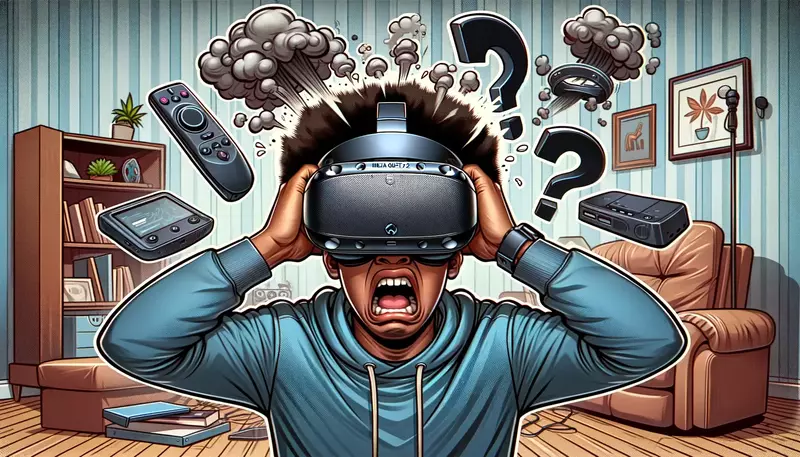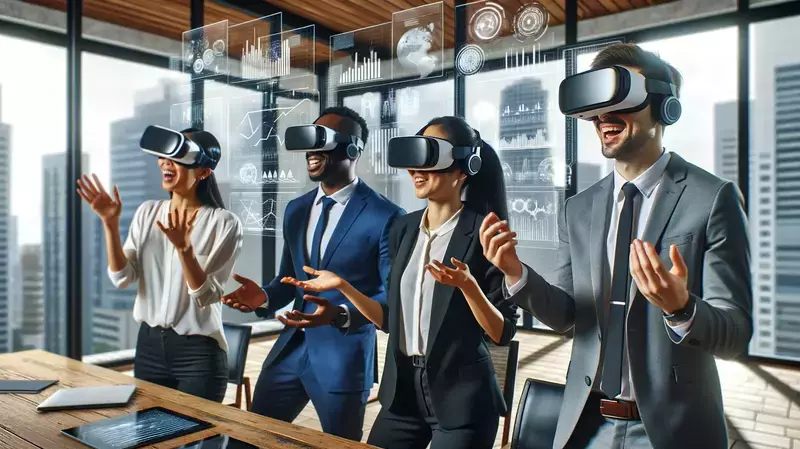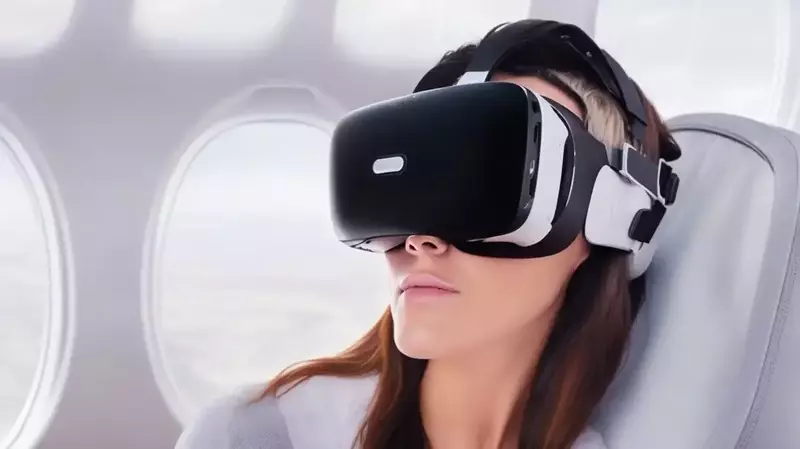This site contains affiliate links to products, and we may receive a commission for purchases made through these links.
The accelerated development of technology has generated much curiosity about the implications it may have on media consumption and production, particularly in regard to the metaverse.
As we dive deeper into this virtual realm, it becomes essential to explore how these changes will affect various aspects of media consumption and production.
From the transition from print to digital media consumption and the role influencers play within these new virtual spaces, there’s much ground to cover when discussing the metaverse impact on media.
This blog post aims to provide insights into some key areas, such as defining the metaverse itself and exploring its use cases for gaming, sports, and entertainment industries.
We’ll also discuss hardware advancements that are driving widespread adoption of virtual reality technologies like 5G connectivity and decreasing cloud computing costs.
Finally, we’ll take a closer look at India’s first virtual influencer – Kyra – examining her collaborations with popular brands while shedding light on future prospects and challenges faced by this emerging industry.

The Metaverse and Its Impact on Media
Traditional media is evolving as the metaverse gains prominence, with newspapers and television transitioning to digital formats.
Influencers in this space should focus on supporting developer initiatives rather than promoting specific tokens or engaging in pump-and-dump schemes.
In this part, we’ll look at the move from print to digital media usage and influencers’ involvement in the metaverse.
The transition from Print to Digital Media Consumption
With the emergence of virtual reality, consumers have begun to turn away from print media and toward digital content.
As more users become immersed in these new experiences, traditional forms of media such as newspapers and television are being replaced by their digital counterparts.

This transformation can be seen through the increasing popularity of online news platforms like The New York Times, which now boasts millions of subscribers worldwide.
- Digital publications: Newspapers have adapted by offering online versions that provide real-time updates while maintaining high-quality journalism standards.
- Social media: Platforms like Facebook, Twitter, and Instagram allow for instant sharing of news articles, making it easier for users to stay informed about current events.
- Paid subscriptions: Many publications offer subscription-based models where readers pay for access to premium content without ads or other distractions.
Role of Influencers in The Metaverse
Influencers play a crucial part within the metaverse ecosystem by driving user engagement with various virtual reality applications.
They help promote innovative projects that contribute towards building immersive environments for everyone’s enjoyment.
However, there are certain ethical considerations they must adhere to when endorsing products or services related to this emerging technology.
- Supporting developer initiatives: Influencers should focus on backing projects that push the boundaries of virtual reality, rather than promoting specific tokens or engaging in pump-and-dump schemes. This approach fosters a healthier ecosystem for all stakeholders involved.
- Ethical endorsements: When partnering with brands or companies, influencers must ensure they are transparent about their affiliations and only endorse products that align with their values and audience’s interests.
- Fostering community growth: By actively participating in discussions surrounding the metaverse, influencers can help create a more inclusive environment where users feel encouraged to explore new possibilities within this digital realm.
In conclusion,
The Metaverse and its impact on media has been revolutionary, changing the way people consume content in an unprecedented manner.
With this new technology comes a plethora of potential applications for virtual reality use cases such as gaming, sports and entertainment that will be discussed further in the next heading.
Defining the Metaverse and Virtual Reality Use Cases
The concept of the metaverse encompasses a wide range of virtual experiences, including gaming, sports, and other forms of mass engagement content. As technology advances, companies like Unreal Engine are working towards creating more immersive environments for users.
Exploring how gaming is a major factor in the advancement of virtual reality, we will also consider potential applications for sports and entertainment.
Gaming’s Role in Driving Virtual Reality Development
Gaming has always been at the forefront of technological advancements. With an ever-growing demand for new experiences from gamers worldwide, developers have been pushing the boundaries to create increasingly realistic worlds within their games.
The introduction of virtual reality (VR) headsets has revolutionized gameplay by providing players with fully immersive 3D environments that they can interact with on a whole new level.
In recent years, popular games such as Half-Life: Alyx, Beat Saber, and Rec Room>/url> have showcased VR’s potential to deliver unparalleled gaming experiences.
These successes have driven further investment into VR technologies from both established game studios and indie developers alike.
Potential Applications for Sports and Entertainment
Beyond gaming lies a vast array of possibilities for incorporating VR into various aspects of sports and entertainment. VR technology can be used to provide a virtual experience of concerts and sports games, allowing enthusiasts to take in the action from their own home.
Companies like NextVR are already offering VR broadcasts of major sporting events such as NBA games and NASCAR races.
In addition, virtual reality has opened up new avenues for training athletes by simulating real-world scenarios within a controlled environment.
The NFL’s Dallas Cowboys have adopted VR technology in their practice sessions using the STRIVR platform, which helps players improve decision-making skills through repeated exposure to game-like situations.
- Film and Television: Virtual reality is also being explored as a medium for storytelling in film and television production. Directors can use this technology to create more engaging content that draws viewers into the story world with greater depth than traditional media formats.
- Educational Experiences: Educational institutions are beginning to leverage VR technologies for teaching purposes, providing students with interactive learning experiences that enhance understanding of complex subjects through hands-on exploration.
- Social Interaction: Social platforms such as Facebook’s Horizon Workrooms offer users an opportunity to connect with friends or colleagues in a shared virtual space where they can collaborate on projects or simply hang out together online.
The metaverse holds immense potential across various industries beyond gaming alone; it is only limited by our imagination and technological advancements yet-to-come. As we continue exploring its possibilities, we will undoubtedly witness even more innovative applications emerge over time.
The potential applications of virtual reality are vast and ever-evolving, with gaming leading the charge in development. As hardware advances continue to drive metaversal adoption, 5G connectivity is becoming increasingly important for seamless integration into this new digital world.
Hardware Advancements Driving Metaversal Adoption
The rapid growth of the metaverse and its impact on media can be attributed to significant advancements in hardware technology.
As hardware technology progresses, it opens up the possibility for smoother integration into virtual realms, making it easier for people to access and interact within the metaverse.
Importance of 5G Connectivity for Seamless Integration into the Metaverse
5G connectivity plays a crucial role in providing faster data transfer speeds and lower latency compared to previous generations of mobile networks.
This allows for real-time interaction within virtual worlds, enhancing user experiences by reducing lag times and improving overall performance.
With 5G’s potential to support millions of devices simultaneously, we can expect an increased number of people engaging with various forms of media through their smartphones or other connected devices.
Decreasing Cloud Computing Costs Making It Accessible To Wider Audiences
In addition to improved connectivity, cloud computing has become increasingly affordable over time as costs have decreased exponentially due in part to economies of scale achieved by major providers like Amazon Web Services (AWS).
This trend is expected to continue as more companies adopt cloud-based solutions that enable them not only store but also process large amounts data efficiently without having invest heavily infrastructure themselves.
- Easier content creation: Decreased costs associated with cloud computing make it possible for smaller developers or creators who might not have had access previously create high-quality content within metaverse spaces affordably.
- Better scalability: The ability easily scale up down resources based demand means businesses can quickly adapt changing user needs, ensuring smooth experiences even during peak times.
- Global accessibility: Cloud-based solutions enable users access metaverse content from anywhere world as long they have internet connection, further expanding reach potential audience members across globe.
As hardware advancements continue to evolve and become more accessible, we can expect the metaverse’s impact on media consumption to grow exponentially. This will lead to new opportunities for creators and businesses alike while providing users with increasingly immersive and engaging virtual experiences.
Hardware advancements are driving the metaverse adoption forward, with improved 5G connectivity and decreasing cloud computing costs.
The next step in this technological revolution is India’s first virtual influencer – Kyra. She is a collaboration between popular brands and virtual influencers that could shape the future of media as we know it.
India’s First Virtual Influencer – Kyra
The world of social media marketing is constantly evolving, and the emergence of virtual influencers like Kyra represents a new wave within this industry.
Created by FUTR Studios, Kyra has already amassed over 200k followers on Instagram and successfully collaborated with multiple brands, demonstrating the immense potential for growth within this niche market segment.

Collaborations between Virtual Influencers & Popular Brands
As India’s first virtual influencer, Kyra has managed to break barriers in the realm of digital marketing by collaborating with popular brands such as Myntra, Samsung Galaxy A Series, and Nykaa Fashion.
These partnerships not only showcase her versatility but also highlight how businesses are recognizing the value that virtual influencers can bring to their campaigns.
The unique appeal of these digital personalities lies in their ability to engage audiences through captivating visuals while eliminating some of the risks associated with traditional celebrity endorsements.
Future Prospects & Challenges Faced by Virtual Influencer Industry
The rise of virtual influencers like Kyra signals an exciting shift in the way brands approach online advertising. However, there are several challenges that need to be addressed before this industry can truly reach its full potential:
- Ethical considerations: As artificial entities without personal experiences or emotions, it is essential for creators to ensure that they maintain transparency regarding their virtual influencers’ true nature. This will help prevent any potential deception or manipulation of their audience.
- Authenticity: One of the key factors that drive influencer marketing is the perceived authenticity and relatability of these personalities. Virtual influencers must strike a balance between maintaining their unique digital appeal while also creating content that resonates with real-life experiences.
- Regulation: As this industry continues to grow, it becomes increasingly important for regulatory bodies to establish guidelines and standards for virtual influencer marketing practices, ensuring fair competition and consumer protection.
In spite of these challenges, the success stories like Kyra indicate a promising future for virtual influencers in India’s media landscape.
By using modern tech and creative story-telling, virtual influencers could have a significant impact on how brands interact with their audiences in an ever more digitalized environment.
Frequently Asked Questions Metaverse Impact on Media
What impact does the metaverse have on society?
The metaverse impacts society by transforming how we interact, work, and socialize.
It enables immersive experiences in virtual worlds, fostering collaboration and creativity across industries like gaming, education, and entertainment.
Additionally, it democratizes access to resources through digital platforms while raising concerns about privacy and data security.
How does the metaverse impact media?
The metaverse influences media consumption patterns by shifting from traditional print to digital formats.
It also introduces new forms of content creation, such as virtual influencers who engage audiences within these immersive environments.
Moreover, advancements in hardware technology enable seamless integration into the metaverse for sports broadcasting and live events.
!! For more information about the different VR headsets on the market, check out this product specification list.
Conclusion
The metaverse has had a considerable effect on the media landscape, and this pattern is only anticipated to progress.
With hardware advancements driving the adoption of virtual reality technologies and India’s first virtual influencer Kyra making waves in the industry, it looks like we are just scratching the surface of what can be achieved with this new medium.
With the ever-increasing availability of these tools, it is likely that we will see an abundance of innovative content utilizing this powerful immersive technology.
Discover how virtual reality can transform media and communication by exploring the impact of a metaverse on our lives. Join us to learn more about this cutting-edge technology and its potential applications.

Espen
Espen is the Director of PursuitMeta and has written extensively about Virtual Reality and VR Headsets for years. He is a consumer product expert and has personally tested VR Headsets for the last decade.




Leave a Reply